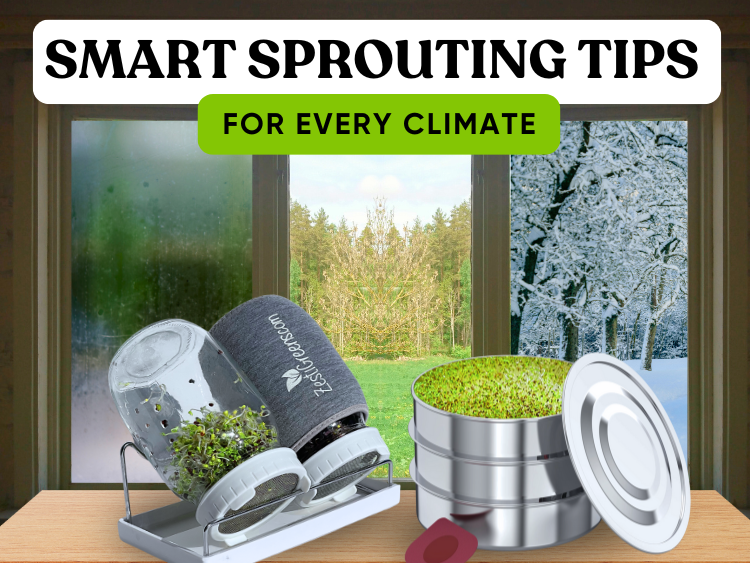Sprouting in Different Climates: Tips for Hot, Humid, or Cold Conditions
Sprouting seeds at home is a rewarding endeavor, offering fresh, nutrient-rich additions to your meals. However, climate plays a pivotal role in the success of your sprouts. Whether you're in a tropical, temperate, or cold region, understanding how to adapt your sprouting techniques to your environment is essential.
Understanding the Basics of Sprouting
Sprouting involves germinating seeds to produce young shoots, which are then consumed. The process requires specific conditions: appropriate temperature, humidity, and airflow. Deviations from these conditions, influenced by your local climate, can affect the quality and safety of your sprouts.
Sprouting in Hot and Humid Climates
High temperatures and humidity can accelerate sprout growth but also increase the risk of mold and bacterial contamination.
Tips:
- Temperature Control: Aim to keep your sprouting environment between 20°C to 25°C (68°F to 77°F). If indoor temperatures are higher, consider using air-conditioned spaces or placing sprouting jars in cooler areas of your home.
- Enhanced Rinsing: Rinse sprouts 3-4 times daily with cool, clean water to prevent bacterial growth. Ensure thorough drainage after each rinse to avoid excess moisture.
- Ventilation: Use mesh lids or breathable covers on sprouting containers to promote airflow and reduce humidity buildup.
- Seed Quantity: Use fewer seeds per batch to allow better air circulation and reduce the risk of mold.
Sprouting in Cold Climates
Cold environments can slow down or inhibit the sprouting process. Maintaining warmth and consistent conditions is key.
Tips:
- Warmth: Use seedling heat mats or place sprouting containers near warm appliances to maintain temperatures around 20°C to 25°C (68°F to 77°F).
- Lighting: In areas with limited natural light, supplement with full spectrum grow lights to provide adequate illumination for sprout growth.
- Humidity: Cold air often lacks humidity. Use a humidifier or place a shallow tray of water near your sprouting area to maintain optimal humidity levels.
- Pre-soaking: Soak seeds in warm water before sprouting to kickstart the germination process.
Sprouting in Temperate Climates
Temperate regions offer moderate conditions, making sprouting more straightforward.
Tips:
- Seasonal Adjustments: Be mindful of seasonal changes. In winter, you might need to provide additional warmth and light, while in summer, ensure adequate ventilation.
- Monitoring: Regularly check your sprouts for signs of mold or spoilage, adjusting your routine as needed.
General Best Practices for All Climates
- Clean Equipment: Always use clean jars, lids, and utensils to prevent contamination.
- Quality Seeds: Source high-quality, organic seeds specifically meant for sprouting.
- Storage: Once sprouts are ready, store them in the refrigerator and consume within a few days for optimal freshness.
ZestiGreens: Supporting Your Sprouting Journey
At ZestiGreens, we understand the nuances of sprouting in diverse climates. Our curated selection of sprouting kits and seeds are designed to cater to various environmental conditions, ensuring you achieve the best results regardless of where you live.









